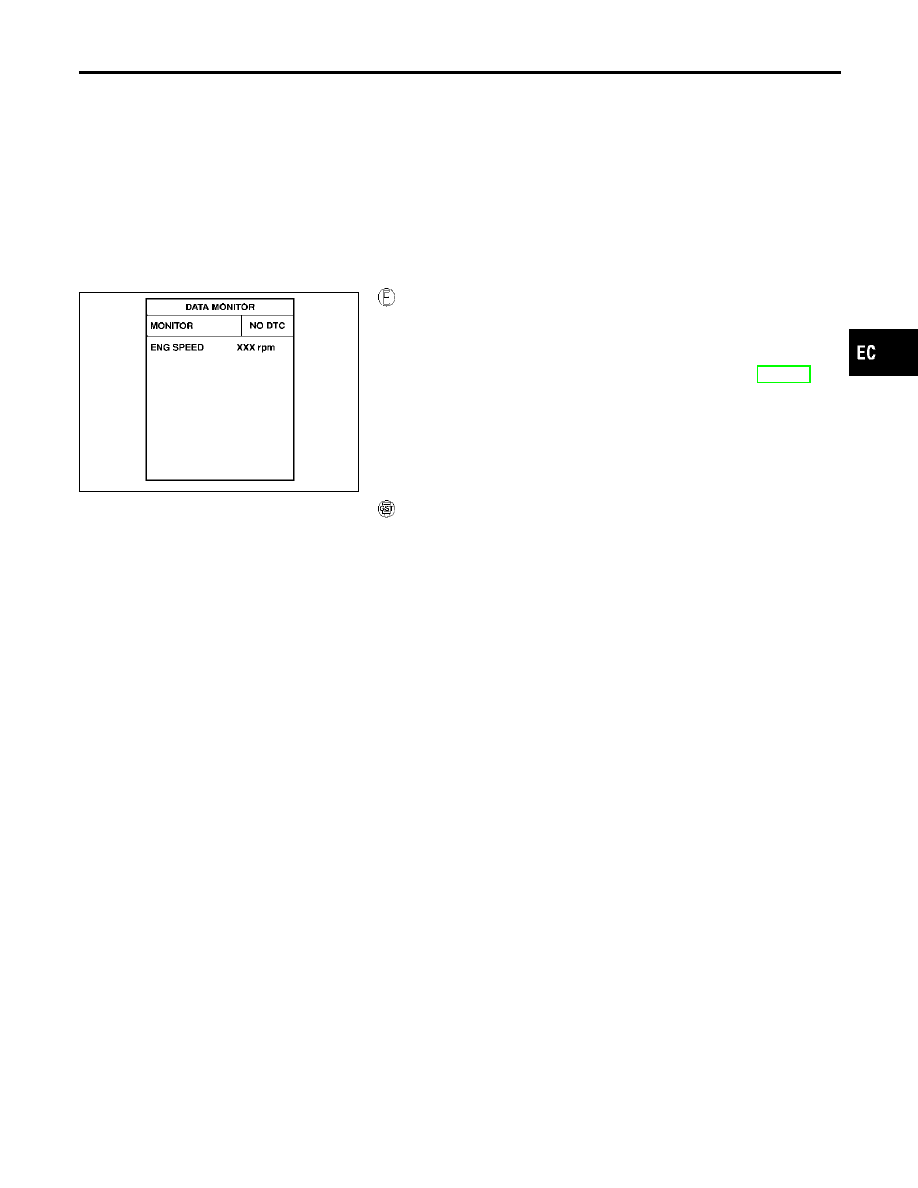Infiniti I30. Emission Control System (2003 year). Instruction - part 14

DTC Confirmation Procedure
NHEC1456
NOTE:
If “DTC Confirmation Procedure” has been previously conducted,
always turn ignition switch “OFF” and wait at least 10 seconds
before conducting the next test.
TESTING CONDITION:
Before performing the following procedure, confirm that bat-
tery voltage is more than 10V at idle.
SEF058Y
With CONSULT-II
1)
Turn ignition switch “ON”.
2)
Select “DATA MONITOR” mode with CONSULT-II.
3)
Start engine and let it idle for 1 second.
4)
If DTC is detected, go to “Diagnostic Procedure”, EC-211.
With GST
Follow the procedure “With CONSULT-II” above.
GI
MA
EM
LC
FE
AT
AX
SU
BR
ST
RS
BT
HA
SC
EL
IDX
DTC P0122, P0123 TP SENSOR
DTC Confirmation Procedure
EC-209